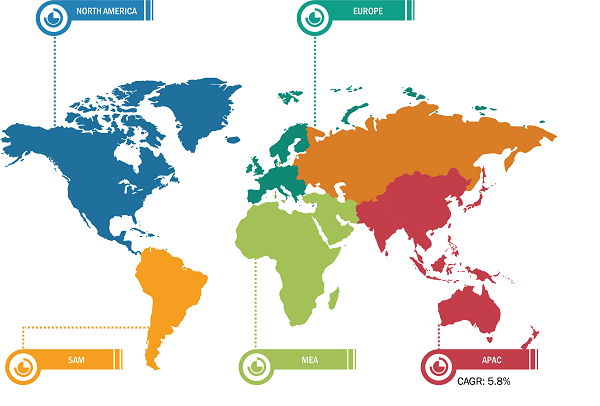Increasing Demand from Various End-Use Industries Accelerates Talc Market Growth
According to our new research study on “Talc Market Forecast to 2030 – COVID-19 Impact and Global Analysis – by Deposit Type and End-Use Industry,” the talc market size is expected to grow from US$ 1,987.43 million in 2022 to US$ 2,932.29 million by 2030; it is estimated to record a CAGR of 5.0% from 2022 to 2030. The report highlights key factors driving the talc market growth and prominent players along with their developments in the market.
Talc is a hydrated magnesium silicate. Talc deposits are formed from the transformation of high magnesium rocks by siliceous hydrothermal fluids. Most of the talc originates from the alteration of dolomite or ultramafic intrusive rocks. It is always found in combination with other minerals, generally with carbonates and chlorite. Each talc deposit has a unique morphology and mineralogy, but all types of talc exhibit the following unique properties such as softness, water repellency, chemical inertness, platyness, and an affinity for organic substances.
Global Talc Market Breakdown – by Region
Talc Market Size and Forecasts (2020 - 2030), Global and Regional Share, Trends, and Growth Opportunity Analysis Report Coverage: By Deposit Type (Talc Chlorite and Talc Carbonate) and End-Use Industry (Plastics, Pulp & Paper, Ceramics, Paints & Coatings, Rubber, Pharmaceuticals, Food, and Others)
Talc Market Trends and Top Players by 2030
Download Free Sample
These properties make talc suitable as multi-functional filler and process enabler in a wide range of applications from plastics to paper, ceramics to paint. Talc is used as an anti-sticking agent, anti-caking agent, lubricant, a carrier, a thickener, a strengthening filler, a smooth filler, and an adsorbent. The major driver for the growth of the talc market is the growing demand from various end-use industries, such as ceramics, plastics, paints and coatings, food, and agriculture. The ceramics segment is the most attractive segment and creates lucrative opportunities in the global talc market. The plastics industry is another essential consumer of talc. Talc is mainly used as a filler in plastics.
Elementis Plc, Golcha Minerals Pvt Ltd, Imerys SA, IMI Fabi SpA, Liaoning Aihai Talc Co Ltd, Minerals Technologies Inc, Nippon Talc Co Ltd, SCR-Sibelco NV, Sun Minerals Pvt Ltd, and Xilolite SA are among the key players operating in the global talc market. Market players focus on providing high-quality products to fulfill customer demand. They also adopt strategies such as investments in research and development activities and new product launches.
Impact of COVID-19 Pandemic on Talc Market
The COVID-19 pandemic adversely affected several economies and industries in various countries due to lockdowns, travel restrictions, and business shutdowns. The chemicals industry was severely affected by disruptions in supply chains and shutdowns of production plants in the initial phases of the pandemic. The crisis caused disruptions in the global supply chain due to factory shutdowns, transportation restrictions, and labor shortages. These upheavals hindered the availability of chemicals and packaging components, leading to potential supply chain delays and increased operating costs for talc manufacturers. The COVID-19 pandemic led to an increased demand for certain products, such as pharmaceuticals, healthcare supplies, and essential consumer goods.
The report includes the segmentation of the global talc market as follows:
The global talc market is divided on the basis of type and end-use industry. Based on deposit type, the talc market is segmented into talc chlorite and talc carbonate. Based on end-use industry, the talc market is segmented into plastics, pulp & paper, ceramics, paints & coatings, rubber, pharmaceuticals, food, and others. By geography, the global talc market is broadly segmented into North America, Europe, Asia Pacific, the Middle East & Africa, and South & Central America. The North America talc market is further segmented into the US, Canada, and Mexico. The market in Europe is subsegmented into Germany, France, the UK, Italy, Russia, and the Rest of Europe. The Asia Pacific talc market is further segmented into China, India, Japan, Australia, South Korea, and the Rest of Asia Pacific. The Middle East & Africa market is further segmented into South Africa, Saudi Arabia, the UAE, and the Rest of Middle East & Africa. The South & Central America talc market is further segmented into Brazil, Argentina, and the Rest of South & Central America.
Contact Us
Phone: +1-646-491-9876
Email Id: sales@theinsightpartners.com